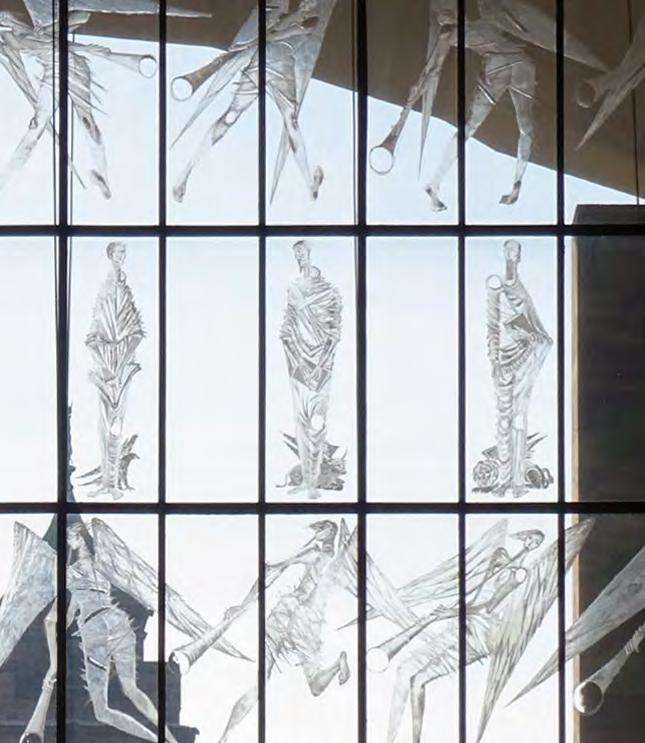CONSERVATION FRAMEWORK
5.3.7 RESTORATION AND NEW WORKS
•
The maintenance implications of the proposed restoration are considered to be sustainable.68
•
See also: 5.3.3
Design vision
5.3.6
Repair, maintenance and conservation
5.3.9
Visitor facilities and access
Authenticity and integrity are important concepts and the Cathedral is significant for the intactness of these values. Restoration should therefore a last resort, with stabilisation, consolidation and repair of significant elements being preferable to restoration or replacement. The long-term viability, sustainability, heritage impact and cost implications of each option would need to be carefully considered.
The long-term consequences of the proposals can, from experience, be demonstrated to be benign, or the proposals are designed not to prejudice alternative solutions in the future.70
At the Cathedral, a principle of removing intrusive, modern additions is acceptable. However, some later changes or additions at the Cathedral also hold value and the significance of these changes or additions should be recognised and respected (see Management Gazetteer and Significance Plans for details).
HERITAGE CONSIDERATIONS Restoration Restoration is the principle of returning a place to a known earlier state, on the basis of compelling evidence and without conjecture.67 It represents a much more substantial change compared to that of repair or renewal. Restoration is sometimes necessary for conservation and/or economic reasons.
New works New-build additions or those within the immediate setting will need to be designed in line with the processes set out in the CMP. They should respect the scale, siting, composition, proportion, structure, landscape, materials, texture and colour of the Cathedral. Additions should be discernible as new, identifiable upon close inspection, but work in harmony with the existing; complementing not competing, interpreting not imitating.69
At Coventry Cathedral, restoration may be acceptable if: •
The heritage values of the elements that would be restored decisively outweigh the values of any that would be lost.
•
The work proposed is justified by compelling evidence of the evolution of the place, and is executed in accordance with that evidence.
•
The form in which the place currently exists is not the result of an historically significant event.
•
The work proposed respects previous forms of the place.
67
Historic England, Conservation Principles, policy and guidance, 2008
New work or alteration to a significant place should normally be acceptable if: •
There is sufficient information to comprehensively understand the impacts of the proposal on the significance of the place.
•
The proposal would not materially harm the values of the place, which, where appropriate, would be reinforced or further revealed.
•
The proposals aspire to a quality of design and execution which may be valued now, and in the future.
68
Historic England, Conservation Principles, Policy and Guidance, 2008
69
Madrid-New Delhi document, ICOMOS, 2017 125
Any new work to improve the performance and functionality of the Cathedral should not adversely impact its primary attributes or significance. VULNERABILITIES AND CONFLICTS The Cathedral is vulnerable to detrimental, low-quality, poorly designed, aesthetically incongruous new works within its setting. Early extensions by Spence’s studio (St Clare’s bookshop) or later (1980s café and song school) have so far been small scale, ancillary and in discrete locations. However, the location of the song school near the café is not ideal as it is inaccessible and functionally inefficient. The Chapel of Industry and Christ the Servant needs major repairs. However, the cost of repairs may be prohibitive and other solutions (such as restoration or replacement) may need to be considered. This CMP does not advocate a way forward for the chapel but recommends the approach to managing change is used to begin formal discussions with stakeholders.
70
Historic England, Conservation Principles, Policy and Guidance, 2008














